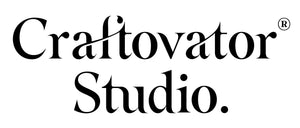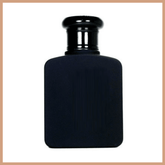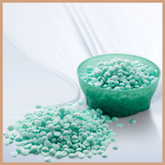How to Make Melt and Pour Soap - The Ultimate Beginner's Guide!
Melt & Pour soaps are a wonderful way to learn all the basics of soap making. If you've ever wanted to try your hand at creating your own soap, our tutorial will talk you through the options that are available as well as show you how to make your own Strawberry and Kiwi massage bar using melt and pour soap base.

We wanted to cover the basics with you today to make you more comfortable with the process if you're still in the beginning stages of your soap making journey. In time, once you've mastered the basics, you'll feel more confident to move on to more advanced techniques.
To help you get started, we're sharing a tutorial below for a gorgeous Strawberry and Kiwi massage bar made with melt and pour soap that you can use to begin your soap making journey. Of course, our tutorial is completely customisable, allowing you to put your own spin on this project but we'll share the choices that we made to make it easier for you to replicate in its entirety to ensure you've got the process down pat.
Check out our video tutorial (there are also written instructions below!) and then read on to find out if using Melt and Pour Soap Base is right for you!
Please note: Our tutorial is designed for personal use only. You will need to follow all legal responsibilities before selling any products that come into contact with skin.
See our Melt & Pour Soap Assessment to purchase an assessment and our blog post on Assessments & CPSR - How to Sell Bath & Beauty Products in the UK for more information.
Why not try our tutorial to give melt and pour soap a try? This simple recipe is perfect for beginners!
Difficulty Level: Beginner
Makes: 2 150g Soap Bars
Equipment You'll Need

- microwave or double boiler/saucepan
- kitchen weighing scales
- thermometer (optional)
- sharp knife
- spatula
- massage bar mould (or a similar mould that holds approximately 150g/cell)
- heat-proof jug if using the microwave OR a glass bowl for the double boiler method
- Clingfilm wrap (optional)
Ingredients
- 300g of SLS Free Melt and Pour Base
- 6g Strawberry Kiwi Fragrance oil
- 1g Pink Mica powder
- Isopropyl Alcohol or rubbing alcohol in a spray bottle
Step 1 Cut and Weigh the Melt and Pour Base

Place your jug/bowl onto the scales and zero out the counter. Now cut your melt and pour base into small uniform cubes and weigh out 300g into the jug.
Step 2 Melt the Base

Cover your jug with clingfilm to help keep in the moisture whilst heating. Heat your base on 30 second bursts in the microwave until it's fully melted. You can stir between bursts to make sure the clumps are all separated.
If you'd prefer not to use a microwave, the soap base can be heated in a glass bowl over the top of a saucepan of boiling water. This is called the double boiler method.

Once fully melted, spray a little rubbing alcohol to disperse the bubbles and replace the clingfilm over the top which will help prevent a skin from forming on the melted soap.
Melted soap can reach temperatures of about 65-70 degrees C so please be careful not to splash it on yourself. You don't want to overheat your soap base either so try to ensure your soap base doesn't exceed 68-70 degrees C.
Step 3 Add the Colourants

Take your Mica powder and add the desired amount to the base.

Stir in the Mica powder until all lumps have dispersed. A little spray of rubbing alcohol can sometimes help with this.
Step 4 Add the Fragrance Oil

The melted base should be no more than 60 degrees C now and is the ideal temperature to add your scent. If you have a skin forming or the temperature is much lower than suggested, then another 10-15 second burst in the microwave can be done before adding the fragrance oil to bring it back up to the correct temperature.

Add the fragrance oil and gently stir for a minute or two. If bubbles form whilst stirring, give it a spray with the rubbing alcohol.
Step 5 Pour Into the Mould
Top tip: If you have one handy, place your mould onto a tray, or place it where you are not going to need to move the poured soap for a while. Moving the mould before the soap has set will cause wrinkles and ruin the finished look.

With Moulds like the one we're using today, it's a good idea to spray the cells with rubbing alcohol before pouring. This will help the soap get into every little crevice and help prevent air bubbles at the bottom.

Slowly pour your mixture into the mould. Be careful of pouring too fast as this can cause splashes and bubbles.

Once poured, you can spray the top of the soap with the rubbing alcohol to disperse all of the bubbles that lay on the top.
Step 6 Leave to Set and Unmould

You'll want to allow your soap to now set undisturbed for around 4 to 6 hours. Once the soap has fully set, you can then unmould. There is no more waiting involved and the soap can be used straight away!
Why Should I Choose Melt and Pour Soap Base?
The greatest strength of using Melt and Pour soap base is that it's completely customisable to your needs. There are a variety of bases available to choose from and you can further customise the look, scent and qualities of your soap with colours and scents of your choosing.
It's also a great introduction to making soaps if you're still a beginner. With only a few steps - melting your base, adding your colour and scent and pouring it into a mould - you can get started making your own soaps very quickly.
There's also very little time required - once the soap is set, it's ready for use! So there's no waiting around to enjoy your creations.
Which Melt and Pour Soap Base Should I Use?
With such a vast range of bases available you will be spoilt for choice! So you may be asking, "Which one is the best?"
There is no "right" answer here, as with so many different bases available, you'll find each one has their own unique properties so, just choose what appeals to you.
Of course, one important choice to make is whether to use a clear transparent base or a white base.
Using a transparent base will give you a clear, fun-looking, brightly coloured bar. This base is ideal for showing embeds such as different coloured soap pieces, exfoliants and botanicals.
The white base (sometimes referred to as 'opaque') contains titanium dioxide. This base will give you a solid white bar of soap or you can use colour additions to give a classic pastel colouring.
For the Strawberry and Kiwi massage bar tutorial, we chose the transparent SLS Free Melt & Pour Base.
What Equipment Do I Need to Make Melt and Pour Soap?
Most of the equipment you will need to start making Melt & Pour soap can be found in your kitchen cupboards. You certainly don’t need anything fancy! If you have a look at the materials list in our tutorial below, you'll see a list of equipment you'll be needing as a beginner, including things like a set of kitchen scales, a heat proof bowl, a kitchen knife and a microwave or saucepan as well as a few other bits and pieces.
For the Strawberry and Kiwi massage bar tutorial below, we used a simple massage bar mould. We filled 2 cells which hold around 150g each. Of course, any similar sized mould or container will do!
Soap moulds can be found in all different shapes and sizes, single cell & loaf types. As long as your mould choice can withstand higher temperatures and is flexible enough to un-mould the soap once it's set, it will be just fine. You can even try using silicone cake moulds or plastic containers!
How Much Fragrance Oil Can I Use in My Soap?
You are able to scent your soap with up to 3% of either a fragrance oil or essential oils. What does this mean? When considering the total weight of your finished product, you want to ensure that no more than 3% of that total weight is made up of your fragrance oils.
For instance, in a mould cell that holds 150g of finished product, 3% of the total weight would be 4.5g of fragrance oil (150g x 0.03 = 4.5g). You always want to measure your fragrance oils in weight, not by millilitres.
Why? Because millilitres is a volume measurement and not a weight measurement. Oils will often vary in their viscosity (meaning some will be lighter and some heavier) so even at the same volume, you will find they will be different weights. To account for this and to make it easier, every ingredient in your soap should use the same unit of measure - in this case, grams.
How do you know the final weight of your chosen mould? The easiest way to do this is to set your empty mould on your kitchen scales and zero the scales. Then, slowly fill one cell with water. The final weight of this will be a rough guide to how much your finished soap will be but to be on the safe side, add an additional 10% to the weight just to ensure you have enough to fill it - it's always better to have too much left over than not enough!
Can I Use Any Fragrance Oil in My Soaps?
The most important thing to check is whether the oil you would like to use is skin safe. You can do this by checking the IFRA document which is available for download on each fragrance oil product listing - simply click the link that says 'IFRA 49th AMENDMENT'.
Once you've downloaded the IFRA document, under the heading that says "Certificate of Conformity", you'll just want to check Category 9. If the IFRA documents states the safe usage as being 3% or higher then you can use up to the full 3%. Please note, if the IFRA gives a percentage of more than 3%, we would still advise never using more than 3%.
In melt and pour soap, more often than not, 2% will be sufficient. So for our tutorial on making our Strawberry and Kiwi Massage bar, you'll see we used 2% of Strawberry Kiwi Fragrance Oil.
What Colour Should I Use for Melt and Pour Soap?
Getting creative with colourants is so much fun. For melt and pour soap, we recommend using mica powders or water soluble dyes but you can choose any colour you wish when making your soaps.
For our Strawberry and Kiwi Massage bar, we used pink mica powder.
Please note: Our tutorial is designed for personal use only. You will need to follow all legal responsibilities before selling any products that come into contact with skin.
We hope you enjoyed this tutorial and learned a little bit about how easy it is to make your own soaps using melt and pour base! Why not have a look at all our soap bases to decide on your next soap making project?









10 Comments
Do i need to pay for any licensing or documentation to make this
Hi Jean, Thanks so much for your feedback! It’s something we’ve been looking to implement on the blog to make it easier for you to shop so it’s great to hear you’d like to see this too! We’re working on it and hope to introduce that functionality soon :) Kimberly – Craftovator
Could a pack of items needed to make this soap be in a drop down box makeing a one click order process.
This is amazing, I’d love to see more video tutorials on self care products 😍
Loved it just started trying to make soap yous make it look fun and easy thankyou
Leave a comment
All blog comments are checked prior to publishing